Athens’ historical centre traces the urban layout of the old city of Athens in the 19th century, a triangular area bordered by Stadiou, Ermou and Pireos Streets, and crossed by Athinas street.
This was the centre of the social, financial, political, entertainment and cultural life of Athens for over 170 years. Today, a stroll through the historical centre connects the present with the near past, and reveals hidden parts of the city, dressed in the colours of a multicultural society.
Route | Time estimate: 3-4 hours
Our stroll through Athens’ historical centre starts from Omonia Square, which is accessible through Metro lines 1 (green) and 2 (red). It is worth taking a look at the twin hotel buildings ‘Baggeion’ and ‘Alexander the Great’, which overlook the square. Between these buildings we see the entrance to Athinas street, and at its end we can see the Sacred Rock of the Acropolis. We will follow Athinas street for about 100 metres until we come to the first large opening, Kotzia Square, a square with a long history and many things to see. On our right is the old City Hall of Athens, to the rear, the central building of the National Bank of Greece, built in the 19th century, and on our right, the imposing Melas Manor, built by the famous architect Ernst Ziller.
Heading towards Melas Manor, we cross the square, passing its beautiful fountain, and enter Eolou Street, where the discovery of ancient walls have turned this street into an archaeological site. As we approach Sophokleous Street, we find that we have stepped into the bustling trade centre of Athens. Small shops selling spices, cold cuts and cheeses are everywhere, but we keep moving; just a few steps on our right, where the marketplace’s pulse is strongest, is Varvakeios Market, a magnificent, fully renovated 19th-century building carrying a vast assortment of products. As we cross the busy market, making our way past the stalls of vendors, we can feel the beat of everyday life in Athens, pulsating as it has for millennia.
Leaving the market, we enter Evripidou Street, the ‘spice street’. It is true that here you can find the best shops selling gourmet spices and other traditional products, like cheeses, herbs, pasturma, sausages, and choujouk. We follow Ag. Markou Street and step into the clothes market of the historical centre. From pungent spices to colourful fabrics and countless shops for clothes, linen and textiles, if you’re looking for something truly unique or just hard-to-find ribbons or rare buttons, this is where you will surely find them.
Passing through the thousands of fabrics, we turn left onto Vissis Street, up Praxitelous Street, then follow Skouleniou Street until we reach the 11th-century church of Agioi Theodoroi. We continue towards Klafthmonos square and the Museum of the City of Athens, housed in Vouros-Eftaxias residence, a superb building constructed in 1834, which also served as residence for the first royal couple of Greece, Otto and Amalia. Here we admire exhibits from the modern history of the city.
After the museum, we will make a brief stop at Karytsi Square, a well-hidden corner of Athens, which has recently developed into a focal point for the young and trendy, and where history, culture and gastronomy have merged symbiotically. Overlooking the square is the church of St. George Karytsi and directly across from the church is the Parnassos Society building. Completing the scene are the many small cafés and snack bars, perfect for a brief respite.
Resuming our walk, we bear right, down Christou Lada Street and, after passing the Moussouri Theatre on Karytsi Street, we take an immediate right, crossing the arcade to Anthimou Gazi street. Here we see the headquarters of the historic newspaper ‘Estia’ and, directly opposite, among the trees, the Benakeios Library and the Old Hellenic Parliament, which currently houses the History and Ethnology Museum of Greece.
We follow Stadiou street, past one of the major Malls of the capital, to Syntagma Square, the modern centre of the city. On our left, there are luxurious hotels, the Hellenic Parliament, the Pallis building and the Ermou pedestrian street, the most commercial street in Athens. From here we do some window shopping at the high-end brand stores, as we stroll towards Monastiraki. Greeks and tourists from everywhere in the world visit Ermou Street daily to discover new trends in the market, compare prices, and shop their favourite products. We stop briefly at number 11 to admire the superb, early 20th-century building that was once home to the Tourist Hotel, one of the most famous hotels in Athens.
While Ermou Street is an upbeat destination every day of the year, the best time to see it is during the Christmas holiday, when its commercial heart is virtually humming with energy. At the end of Ermou Street we find the little chapel of the Kapnikarea, an 11th-century church of superb architecture with a long history. It is also the perfect spot for us to take a break, because rising above us, just on our left, is a remarkable view of the Acropolis; a perfect opportunity for a picture.
A few metres further down the pedestrian street, we again cross Eolou Street, and to the right, yet another square attracts our attention. So we walk the 40 metres and find ourselves in the square of Agia Irini, a recently developed location with lots of energy, gastronomical surprises and plenty of other reasons to just stop and take it all in. Finally, we see the church of St. Irini, an architectural masterpiece that was the main church of Athens until the Athens Cathedral was built.
Our walk through the essences and colours of Athens’ historical centre is complete. We will now head towards the Monastiraki Metro Station.


